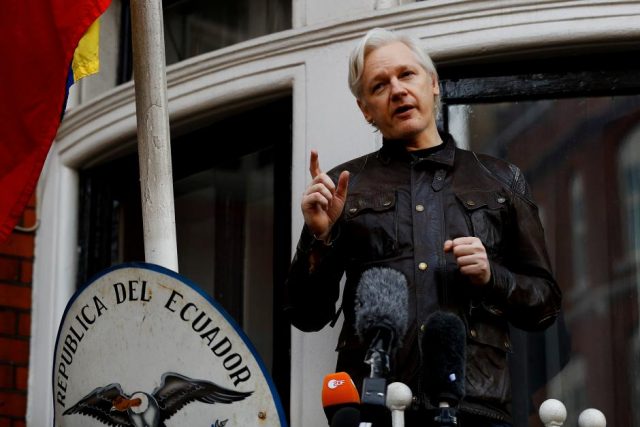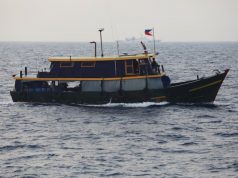LONDON — WikiLeaks founder Julian Assange will learn this week whether he has lost his long-running legal battle to prevent his extradition from Britain to the United States to face criminal charges, nearly all under the Espionage Act.
Who is Julian Assange?
Assange was born in Townsville, Australia, in July 1971.
In his teens, Assange gained a reputation as a sophisticated computer programmer and in 1995 he pleaded guilty to hacking. He was fined, but avoided prison on condition he did not re-offend. In his late 20s, he went to Melbourne University to study mathematics and physics.
What is WikiLeaks?
Assange launched WikiLeaks in 2006, creating a web-based “dead letter drop” for would-be leakers.
The website rose to prominence in April 2010 when it published a classified video showing a 2007 U.S. helicopter attack that killed a dozen people in the Iraqi capital, Baghdad, including two Reuters news staff.
It released more than 90,000 classified U.S. military documents on the war in Afghanistan, and about 400,000 secret U.S. files on the Iraq war. The two leaks represented the largest security breaches of their kind in U.S. military history.
It followed these up with the release of 250,000 secret diplomatic cables from U.S. embassies around the world, with some of the information published by newspapers such as The New York Times and Britain’s Guardian.
The leaks angered and embarrassed U.S. politicians and military officials, who said the unauthorized dissemination put lives at risk.
Ex-army intelligence analyst Chelsea Manning served seven years in a military prison for leaking hundreds of thousands of messages and cables to WikiLeaks, before being released on the order of President Barack Obama.
Arrest and start of legal battle
On Nov. 18, 2010, a Swedish court ordered Assange’s detention as a result of an investigation into allegations of sex crimes made by two female Swedish WikiLeaks volunteers. On Dec. 7, 2010, Assange was arrested by British police on a European Arrest Warrant (EAW) issued by Sweden.
Assange denied the allegations and said from the outset that he believed the Swedish case was a pretext to extradite him to the United States to face charges over the WikiLeaks releases.
In June 2012, shortly after the UK Supreme Court rejected his final challenge against extradition to Sweden, he entered the Ecuadorean Embassy in London seeking asylum.
Assange’s seven years in Ecuadorean embassy
Ecuador granted Assange political asylum on Aug. 16, 2012, with British police mounting a round-the-clock guard to prevent his escape, saying he would be arrested should he leave.
The impasse left Assange living in cramped quarters in the embassy. Swedish prosecutors dropped their investigation in 2017 but British police said he would still be arrested if he left the embassy over his earlier failure to surrender to bail.
During his time in the embassy he had two children with his partner Stella Moris.
Embassy impasse ends, U.S. case begins
On April 11, 2019, a screaming Assange was carried out of the embassy and arrested after Ecuador revoked his asylum.
The following month he was jailed for 50 weeks for breaching his bail conditions. In June 2019, the U.S. Justice Department formally asked Britain to extradite him to the United States to face 18 charges that he conspired to hack U.S. government computers and violated espionage laws.
Although Assange completed his prison sentence in September 2019, he remained in Belmarsh maximum security prison pending extradition hearings.
On Jan. 4, 2021, a British judge ruled Assange should not be extradited to the United States, saying his mental health problems meant he would be at risk of suicide.
However, the U.S. authorities won an appeal in December 2021, after giving assurances about the conditions of Assange’s detention if convicted, including a pledge he could be transferred to Australia to serve any sentence.
On March 23, 2022, Assange married his wife Stella in Belmarsh.
Final legal battle
In June 2022, Britain’s then interior minister Priti Patel approved the extradition, and last year a judge at London’s High Court turned down his request to challenge that decision.
In February, Assange’s legal team sought permission for a final appeal, arguing the case was politically motivated, an assault on freedom of speech and journalism, and that Assange could potentially face the death penalty if convicted.
The High Court rejected his arguments, bar saying the U.S. had to provide assurances he would not face the death penalty and would be entitled to rely on the First Amendment right to free speech as a non-U.S. national.
On May 20, the court will decide if the assurances given in the response submitted by the U.S. meet its requirement.
If he loses his UK legal battle, the only remaining block to his extradition would lie with the European Court of Human Rights (ECHR). It has already dismissed two applications from him in 2015 and 2022.
Should Assange be extradited, his supporters say he could be held in a U.S. high security jail and if convicted could face a 175-year prison sentence. U.S. prosecutors have said it would be no more than 63 months.
Australia’s Prime Minister Anthony Albanese has asked for his release, and U.S. President Joe Biden has said he was considering the request to drop the charges.
However, U.S. officials say it is a matter for the Justice Department and Assange’s legal team said they had seen no indication officials there wanted the case resolved.
—Reporting by Michael Holden; Editing by Ros Russell, Estelle Shirbon and Alex Richardson










